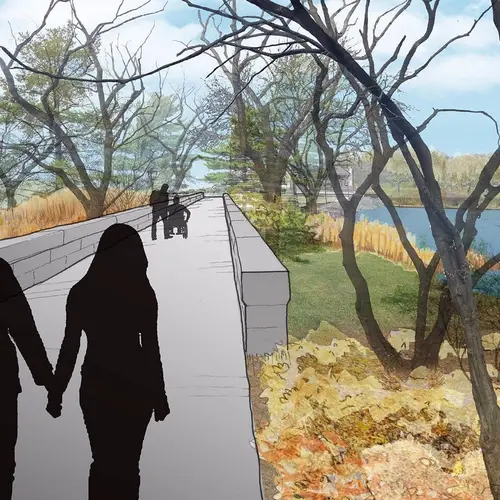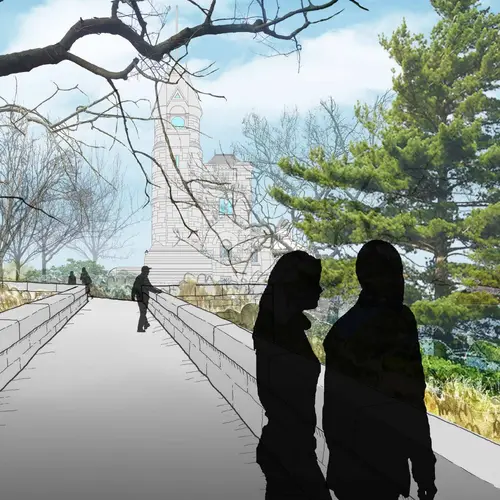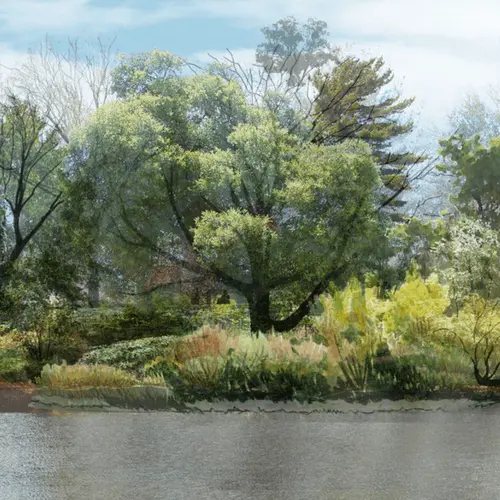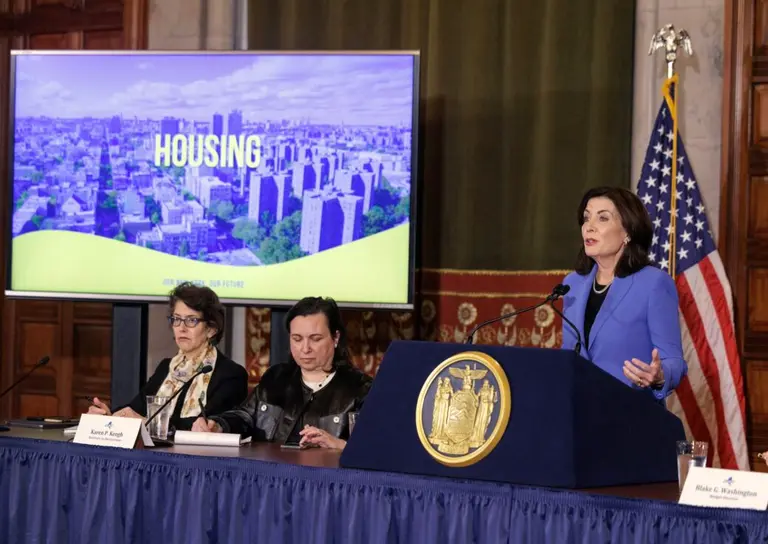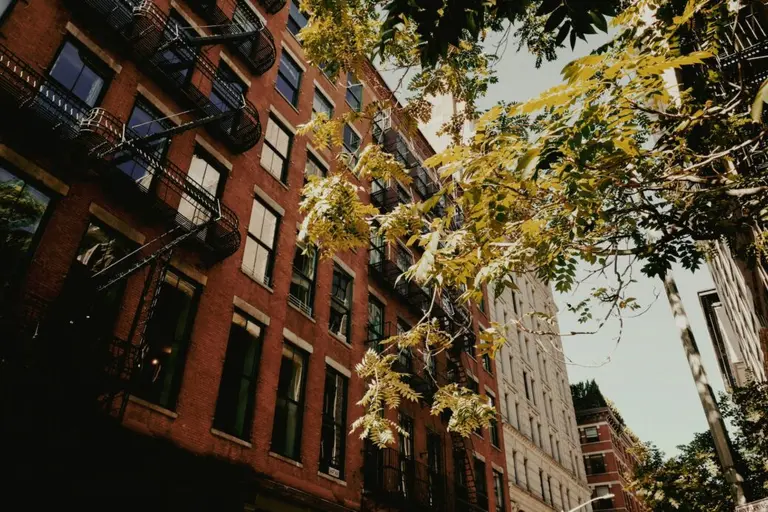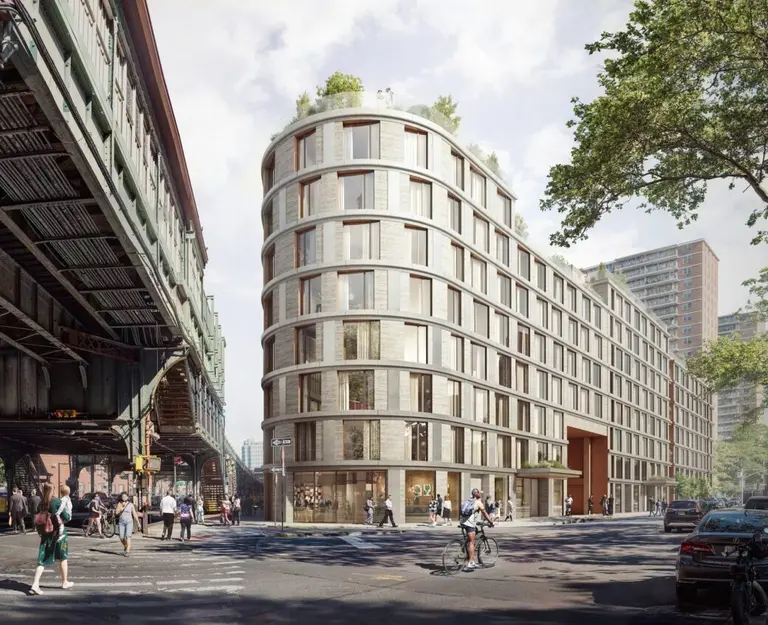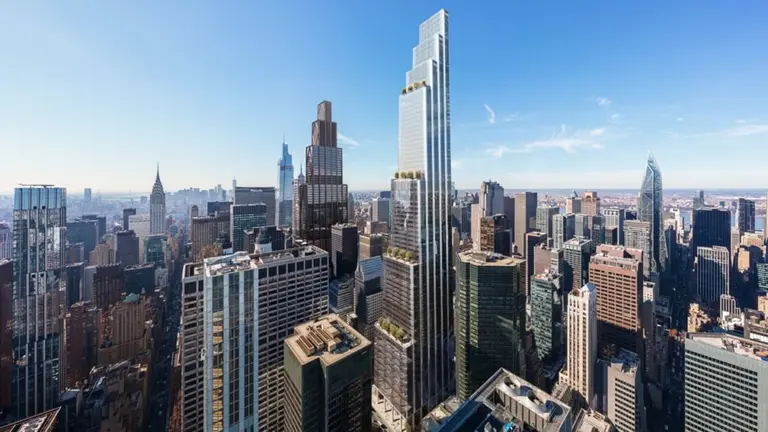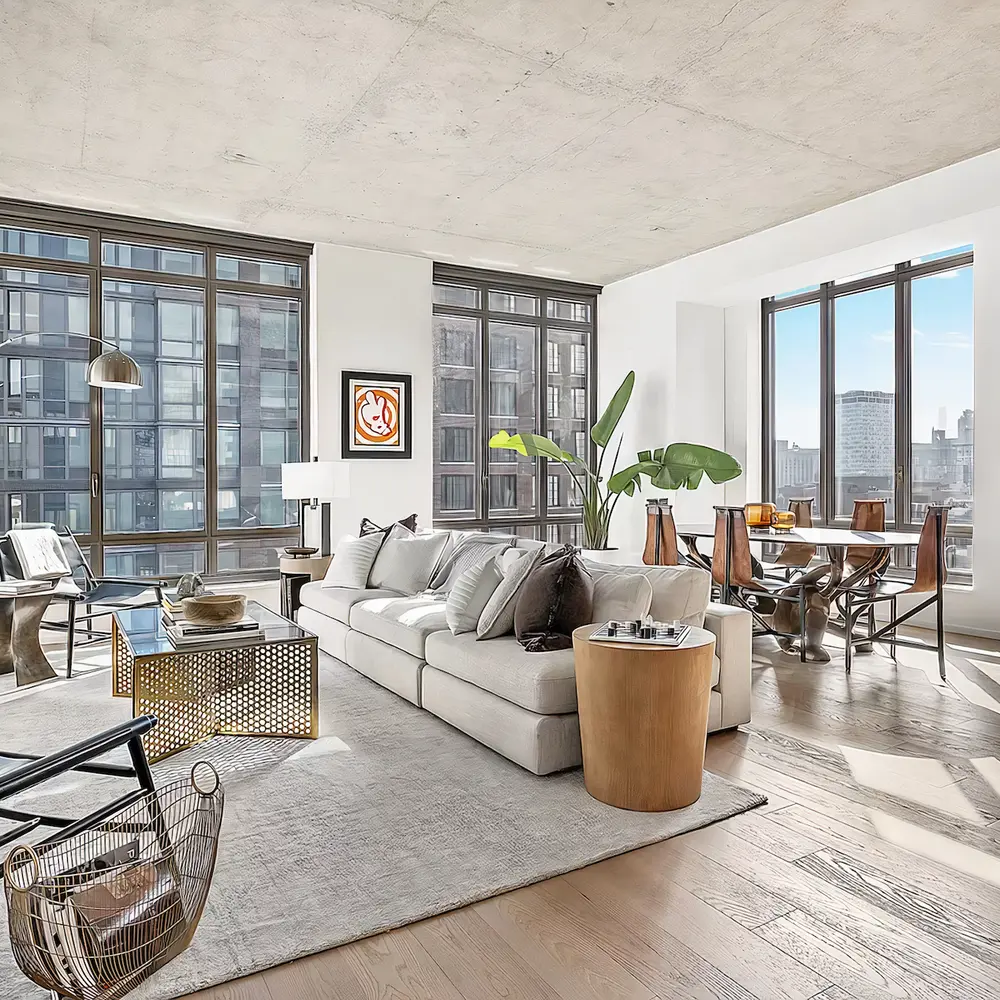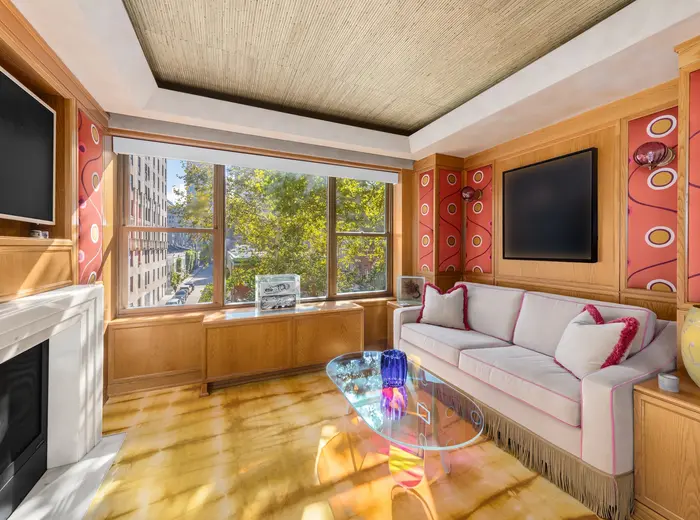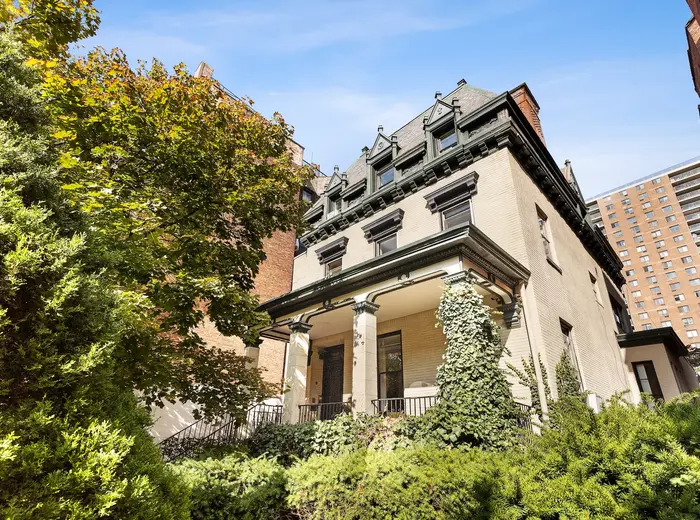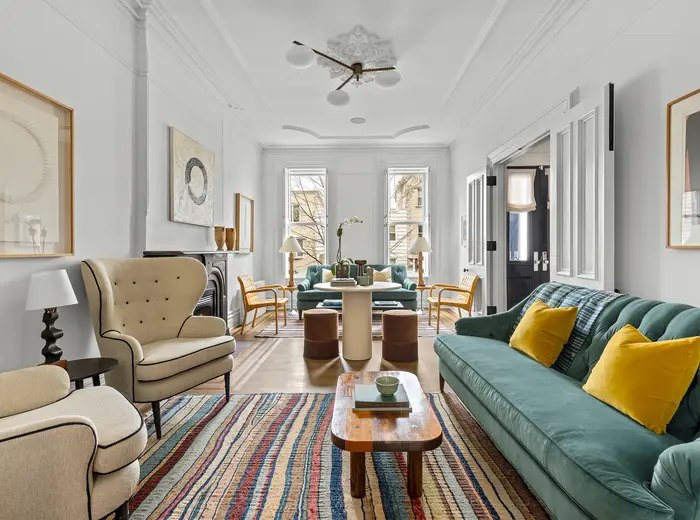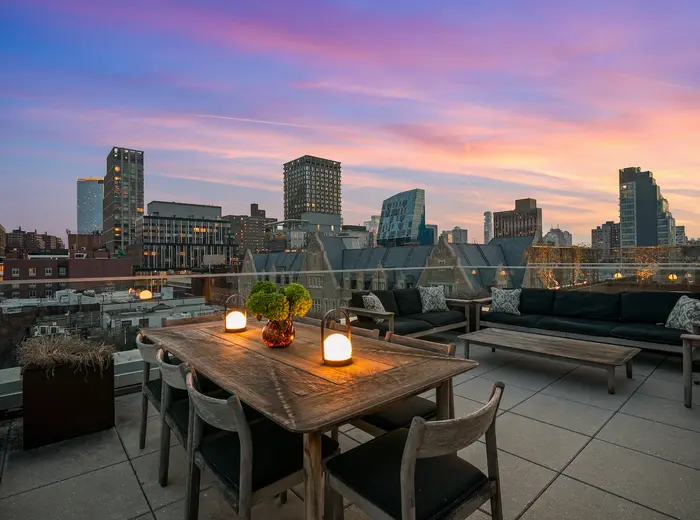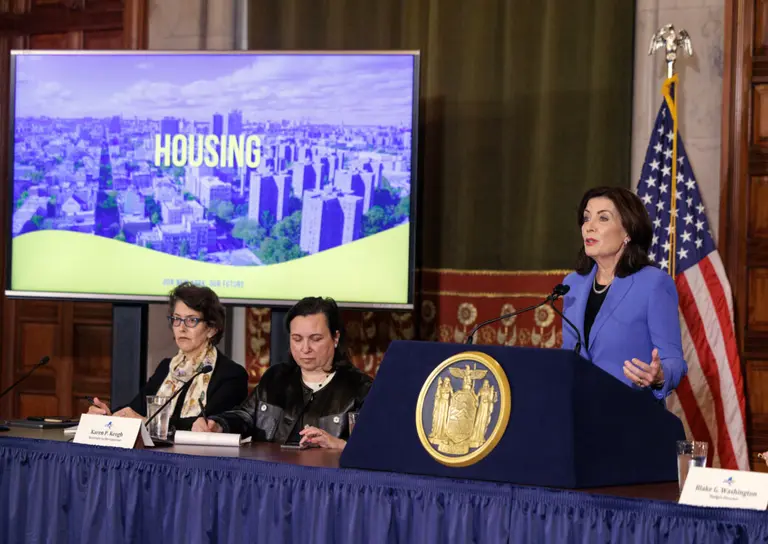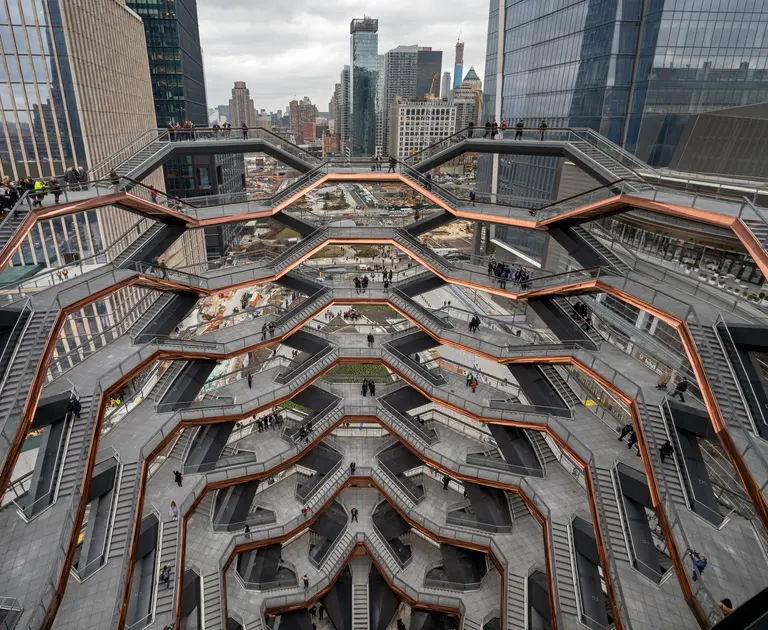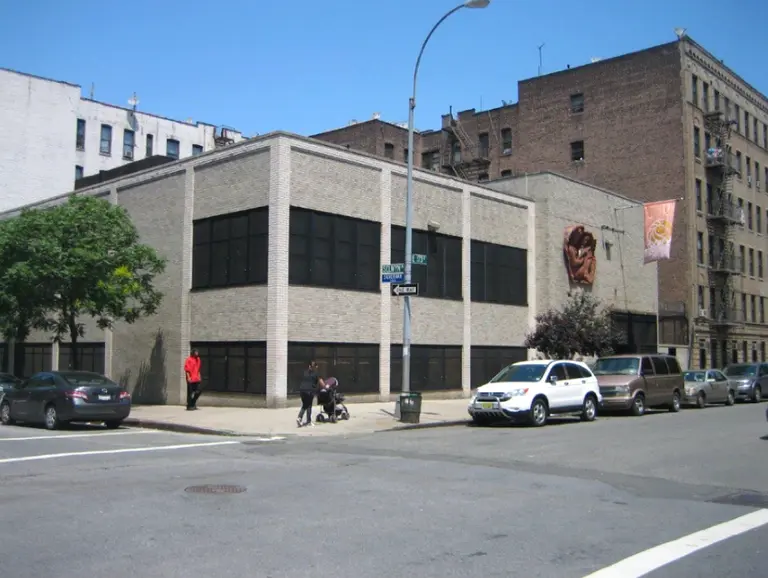Controversy builds over proposed elevated path in Central Park
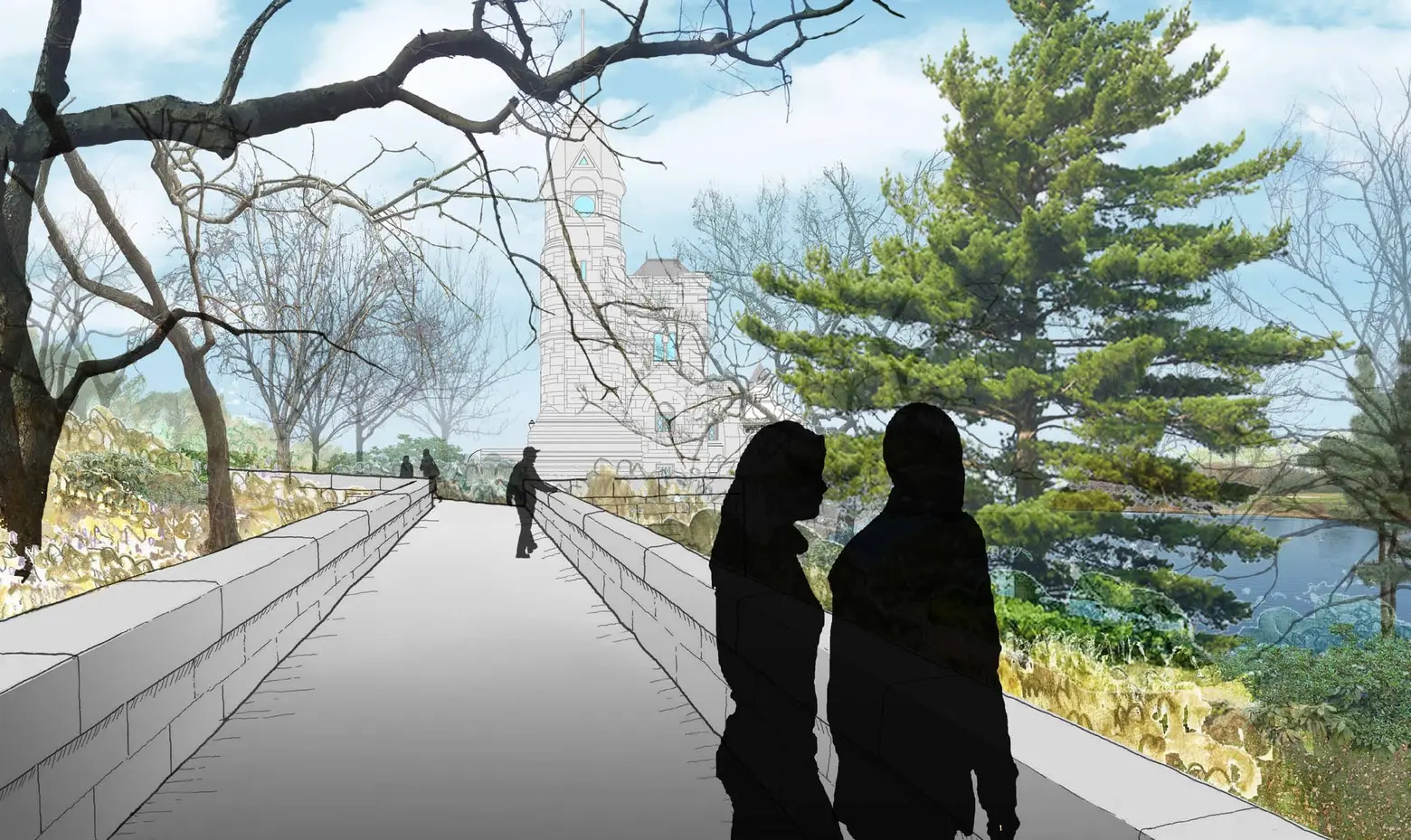
Central Park’s Belvedere Castle will undergo major renovations beginning this summer and early fall, to fix the 146-year-old structure’s cracked pavement, leaking roof and plumbing issues. While the plan to give the castle a face-lift was approved by the Landmarks Preservation Commission last month, the plan to make its path handicap-accessible has not yet been approved. According to the New York Times, preservationists are concerned about the Central Park Conservancy’s proposal to build a ramp-like elevated walkway to the castle’s entrance, saying it would alter the experience of Central Park.
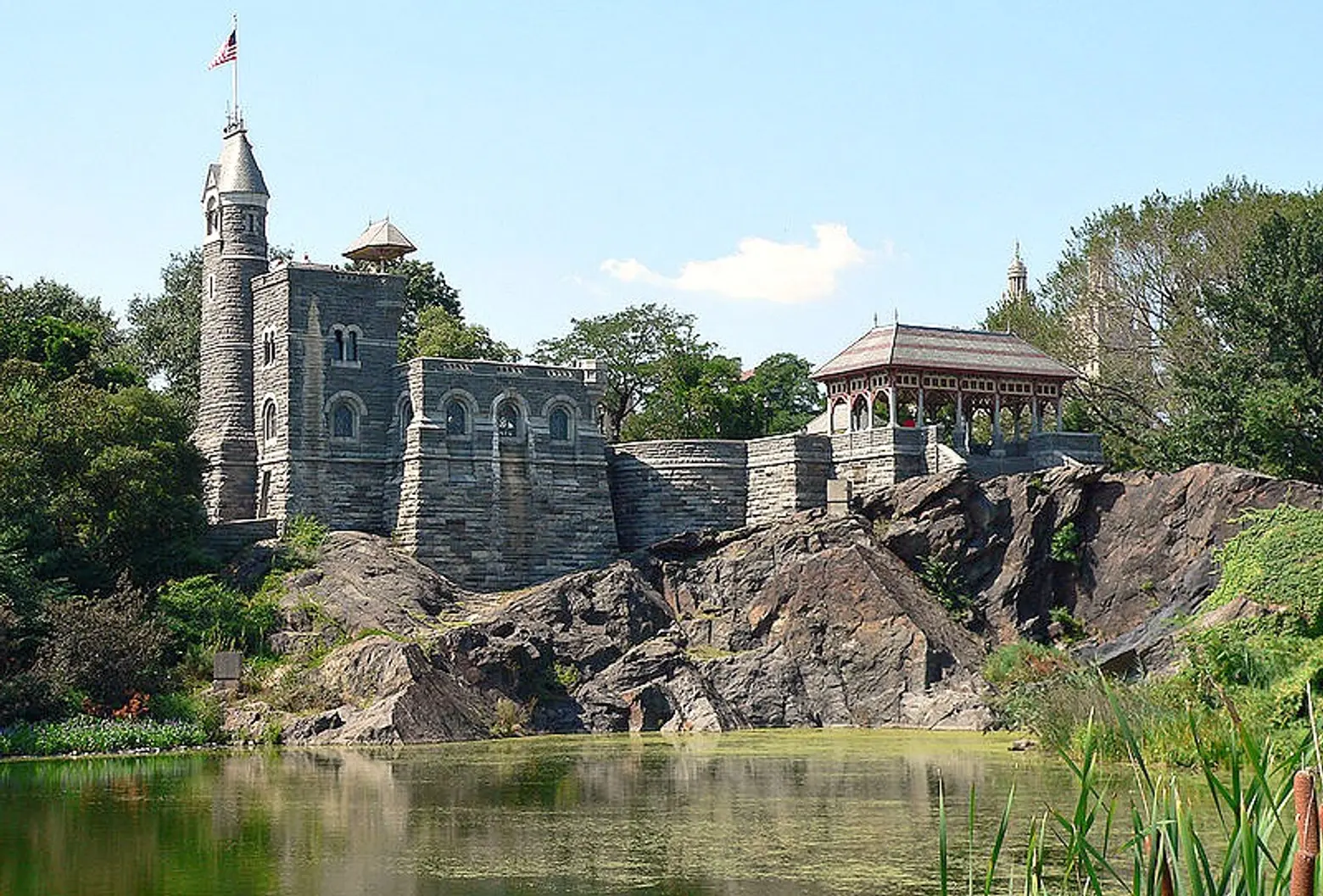
Situated atop Vista Rock on West 79th Street, Belvedere Castle was built in the late 1800s and was designed by Calvert Vaux (who co-designed Central Park with Frederick Law Olmsted) and Jacob Wrey Mould.
 Rendering of the view from the Great Lawn
Rendering of the view from the Great Lawn
The path currently leading to the castle spans 150 feet long but becomes steeper as it approaches the building. The conservancy’s planned walkway would stretch over the entire walkway to make the ascent gentler with waist-high parapet walls on either side. While the path would meet requirements of the Americans with Disabilities Act (ADA), preservationists say the look of the walkway is very important, since it’s one of the most visible places in the park. One preservationist, Theodore Grunewald, called the proposed pathway the Great Wall of Central Park.
“It would alter the experience of Central Park,” he said. “You’d no longer be experiencing the contours Olmsted designed. This is part of Olmsted’s genius. He was thinking about where the trees would be. Everything is a picture. Everything is perfectly framed.”
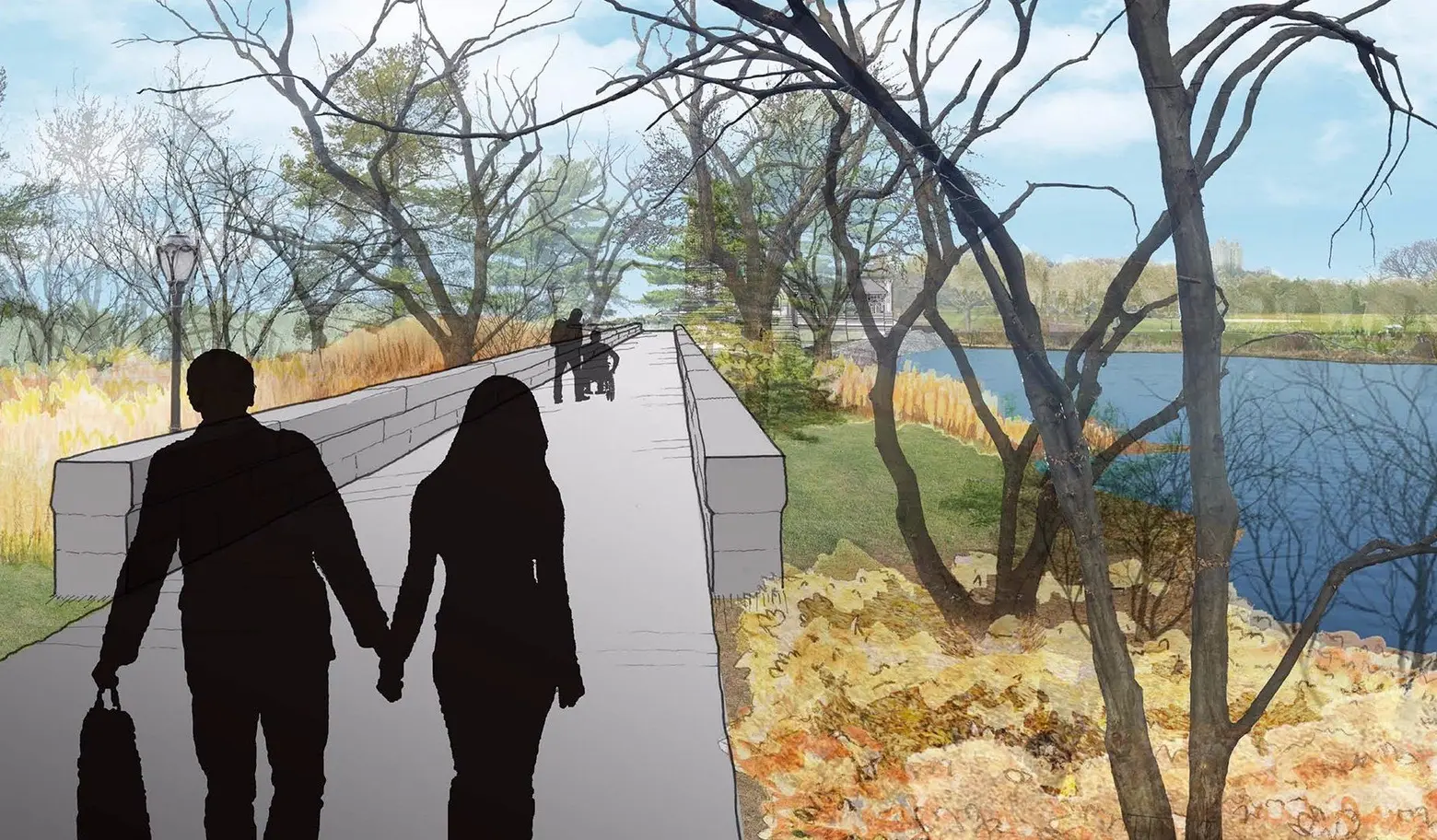
The Conservancy presented computer-generated images to the local community boards and the Landmarks Preservation Commission, which showed a plain, light-colored wall. Instead of following the look of the present path with its small turns, the walkway would be straight. This concerns preservationists like Grunewald, who told the Times: “It’s meant to be indirect. There are meant to be surprises. You come around a turn and there’s a statue, or a castle.”
In response, the Conservancy’s chief landscape architect Christopher Nolan said creating a modern, accessible walkway is “complicated” because its current pathway is so steep. Nolan also argued that Olmstead would not object to using straight lines. “It’s not unprecedented for Olmsted to use straight lines where they were required,” he said, referencing a straight wall that existed near the now-drained reservoir when the park was first designed.
The castle’s renovations include a new drainage/waterproofing system, cleaned and reset masonry, restoration of the decorative wood tower, new pavement on its esplanade, window replacements, and a new bluestone ceiling and floor panels inside. Plus, all 16 of the park’s playgrounds that have not been rebuilt in the last decade will be upgraded. Belvedere Castle, as well as the Bernard Family Playground and Billy Johnson Playground, will be closed for reconstruction starting this summer.
[Via NY Times]
RELATED:
- Central Park’s Belvedere Castle and two playgrounds to close for renovations this summer
- Suffering From Decay, Central Park Seeks $300M for Repairs and Restoration
- See How Much Central Park Has Changed Since the ’80s in These Before-and-After Photos
Preliminary renderings of proposed path via the Central Park Conservancy
